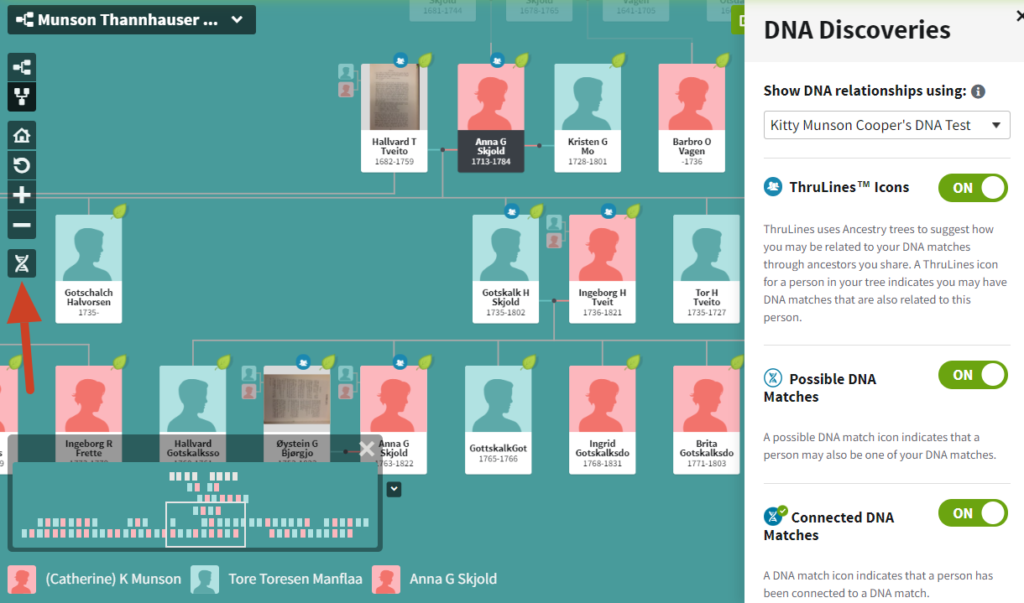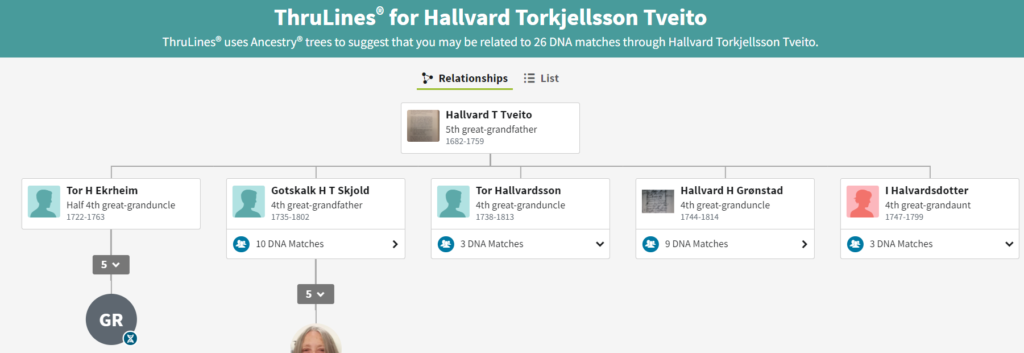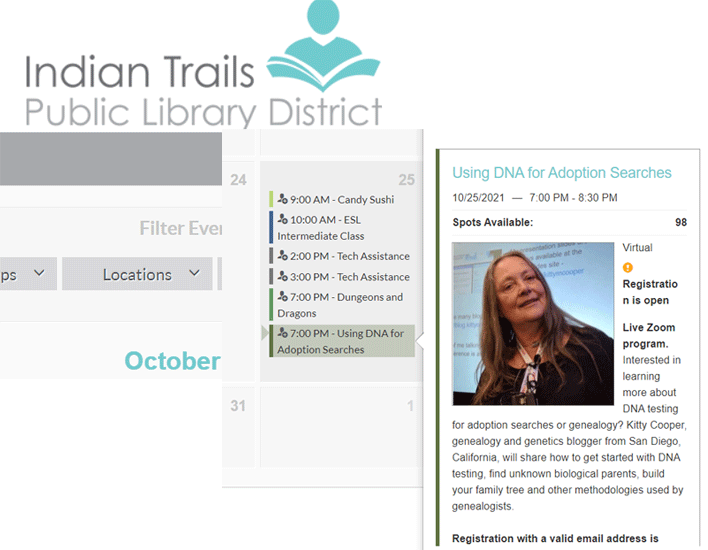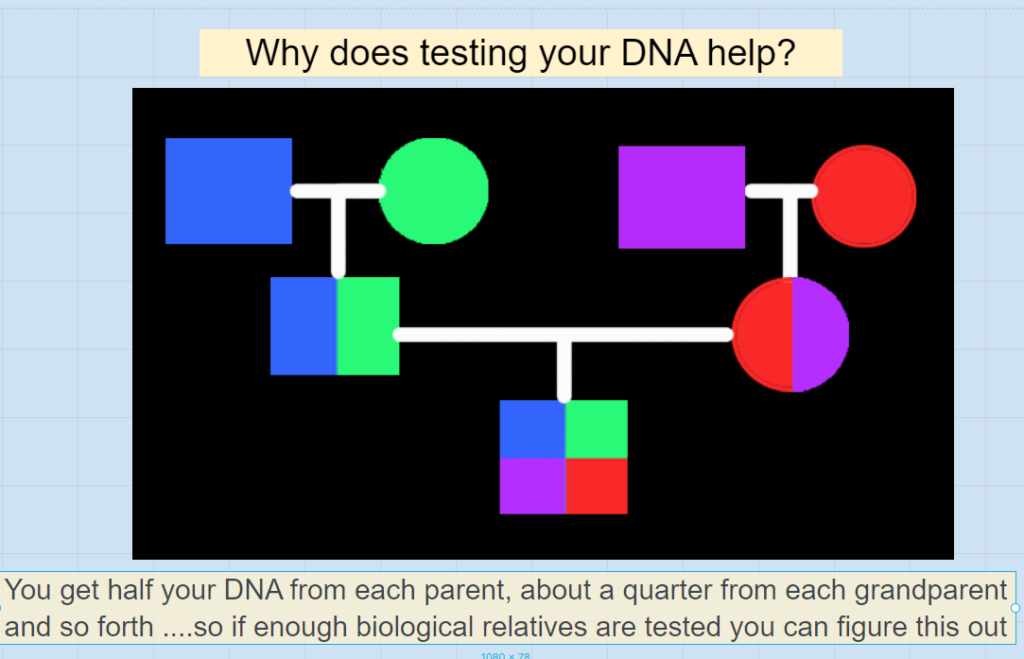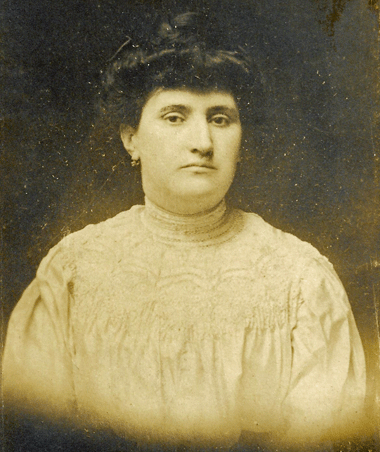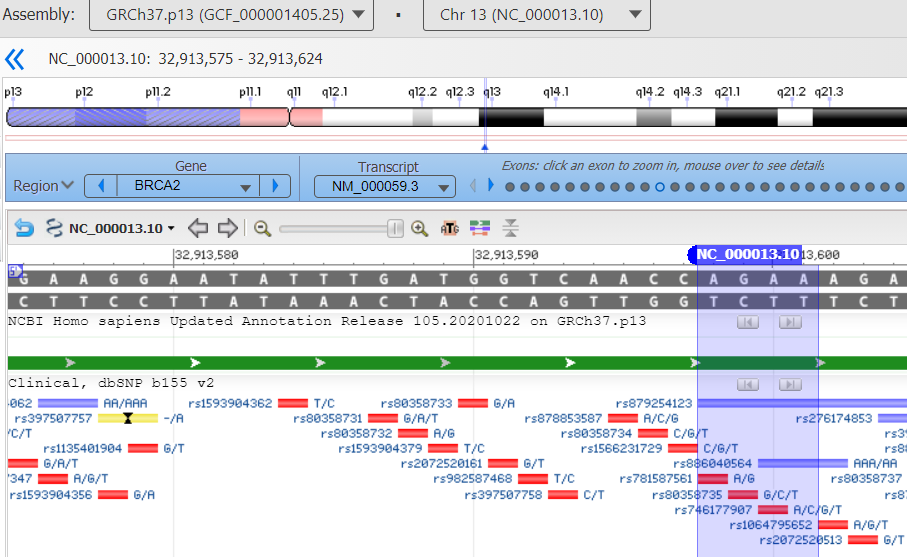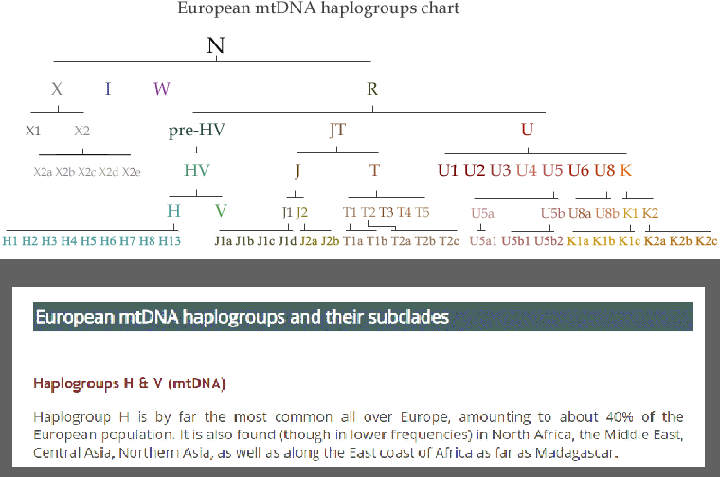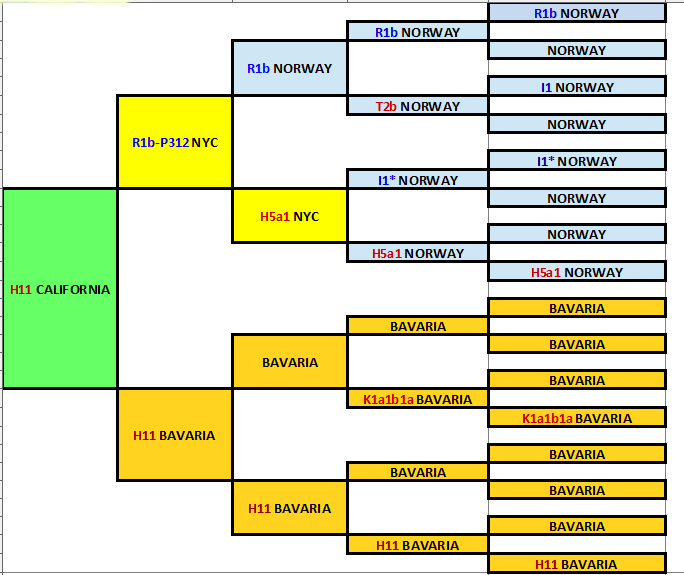MyHeritage has added labels (colored dots) and favorites (stars) to the DNA matches lists. These are extremely similar to the ones at AncestryDNA. One advantage at MyHeritage is that when you select multiple colored dots to display, you are shown all the matches marked with either one, whereas Ancestry only shows the matches who have both. Another advantage is that MyHeritage gives you 30 colors as opposed to the 24 at Ancestry.
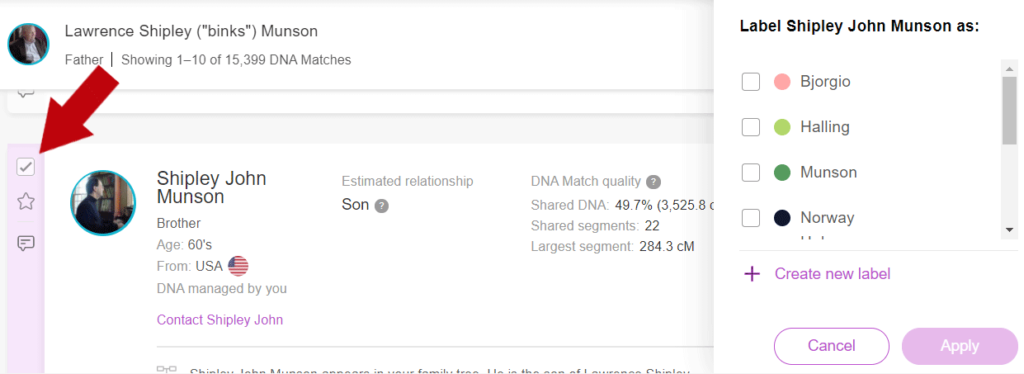
On a DNA match, the left are icons for the new features, labels and favorites, above the new location of the notes icon (red arrow my addition). Clicking the square for a label slides in a panel on the right as above.
The downside of the MyHeritage implementation is that you can only see and edit these colored labels on the DNA match lists, not on the actual match page or its in common with list. According to the blog post that My Heritage wrote on how to use this feature (click here), those pages will have the labels in the future. Also when you export your match list from MyHeritage there is no indication of those labels in the resulting CSV.
So how might you use this new feature? First of all, for myself, I use the favorites star for matches I want to come back to later. However when working on an unknown parentage case, I use the star for just the paternal side which is helpful for various automated tools.
If you have already assigned colored dots on Ancestry, my advice is to use the same colors on your MyHeritage labels for the same groups. Personally I have assigned a color to each great-grandparent line, except my Bavarian line which has very few testers and no matches that I can confirm other than the one 2nd cousin that I convinced to test.
Then I have a few fifth grandparents who seem to have many tested descendants that match us, so they get colors too. Next I assigned colors for as yet undetermined matches from the same localities that my ancestors are from, those include labels for Norway unknown, Germany unknown, and Ashkenazi unknown. Click here for my discussion of how I use the very similar the Ancestry labels.
